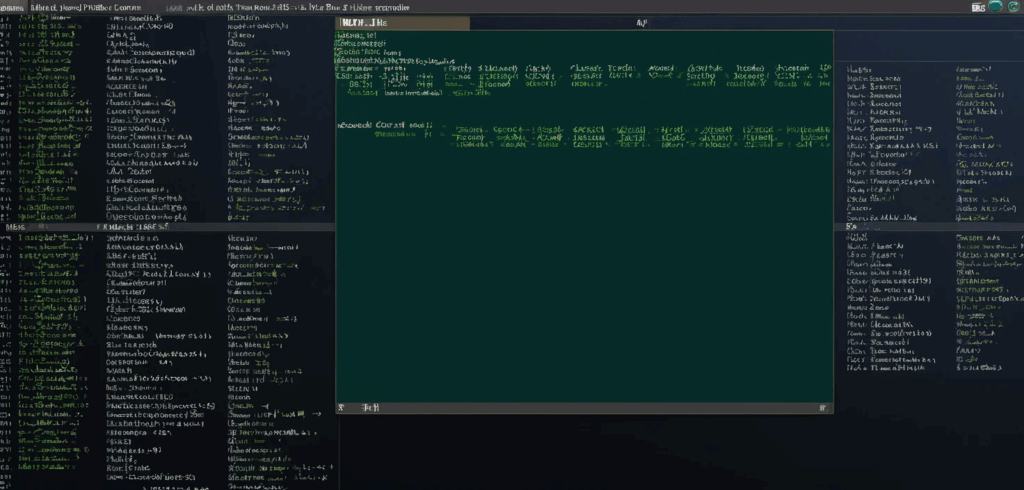Embarking on the adventure of learning Kubernetes can be akin to preparing for a daring voyage across the vast and unpredictable seas. Just as ancient mariners needed to understand the fundamentals of celestial navigation, tide patterns, and ship handling before setting sail, modern digital explorers must equip themselves with a compass of knowledge to navigate the Kubernetes ecosystem.
As you stand at the shore, looking out over the Kubernetes horizon, it’s important to gather your charts and tools. You wouldn’t brave the waves without a map or a compass, and in the same vein, you shouldn’t dive into Kubernetes without a solid grasp of the principles and instruments that will guide you through its depths.
Equipping Yourself with the Mariner’s Tools
Before hoisting the anchor, let’s consider the mariner’s tools you’ll need for a Kubernetes expedition:
- The Compass of Containerization: Understand the world of containers, as they are the vessels that carry your applications across the Kubernetes sea. Grasping how containers are created, managed, and orchestrated is akin to knowing how to read the sea and the stars.
- The Sextant of Systems Knowledge: A good grasp of operating systems, particularly Linux, is your sextant. It helps you chart positions and navigate through the lower-level details that Kubernetes manages.
- The Maps of Cloud Architecture: Familiarize yourself with the layout of the cloud—the ports, the docks, and the routes that services take. Knowledge of cloud environments where Kubernetes often operates is like having detailed maps of coastlines and harbors.
- The Rigging of Networking: Knowing how data travels across the network is like understanding the rigging of your ship. It’s essential for ensuring your microservices communicate effectively within the Kubernetes cluster.
- The Code of Command Line: Proficiency in the command line is your maritime code. It’s the language spoken between you and Kubernetes, allowing you to deploy applications, inspect the state of your cluster, and navigate through the ecosystem.
Setting Sail with Confidence
With these tools in hand, you’ll be better equipped to set sail on the Kubernetes seas. The journey may still hold challenges—after all, the sea is an ever-changing environment. But with preparation, understanding, and the right instruments, you can turn a treacherous trek into a manageable and rewarding expedition.
In the next section, we’ll delve into the specifics of each tool and concept, providing you with the knowledge to not just float but to sail confidently into the world of Kubernetes.
The Compass and the Map: Understanding Containerization
Kubernetes is all about containers, much like how a ship contains goods for transport. If you’re unfamiliar with containerization, think of it as a way to package your application and all the things it needs to run. It’s as if you have a sturdy ship, a reliable compass, and a detailed map: your application, its dependencies, and its environment, all bundled into a compact container that can be shipped anywhere, smoothly and without surprises. For those setting out to chart these waters, there’s a beacon of knowledge to guide you: IBM offers a clear and accessible introduction to containerization, complete with a friendly video. It’s an ideal port of call for beginners to dock at, providing the perfect compass and map to navigate the fundamental concepts of containerization before you hoist your sails with Kubernetes.
Hoisting the Sails: Cloud Fundamentals
Next, envision the cloud as the vast ocean through which your Kubernetes ships will voyage. The majority of Kubernetes journeys unfold upon this digital sea, where the winds of technology shift with swift and unpredictable currents. Before you unfurl the sails, it’s paramount to familiarize yourself with the fundamentals of the cloud—those concepts like virtual machines, load balancers, and storage services that form the very currents and trade winds powering our voyage.
This knowledge is the canvas of your sails and the wood of your rudder, essential for harnessing the cloud’s robust power, allowing you to navigate its expanse swiftly and effectively. Just as sailors of yore needed to understand the sea’s moods and movements, so must you grasp how cloud environments support and interact with containerized applications.
For mariners eager to chart these waters, there exists a lighthouse of learning to illuminate your path: Here you can find a concise and thorough exploration of cloud fundamentals, including an hour-long guided video voyage that steps through the essential cloud services that every modern sailor should know. Docking at this knowledge harbor will equip you with a robust set of navigational tools, ensuring that your journey into the world of Kubernetes is both educated and precise.
Charting the Course: Declarative Manifests and YAML
Just as a skilled cartographer lays out the oceans, continents, and pathways of the world with care and precision, so does YAML serve as the mapmaker for your Kubernetes journey. It’s in these YAML files where you’ll chart the course of your applications, declaring the ports of call and the paths you wish to traverse. Mastering YAML is akin to mastering the reading of nautical charts; it’s not just about plotting a course but understanding the depths and the tides that will shape your voyage.
The importance of these YAML manifests cannot be overstated—they are the very fabric of your Kubernetes sails. A misplaced indent, like a misread star, can lead you astray into the vastness, turning a straightforward journey into a daunting ordeal. Becoming adept in YAML’s syntax, its nuances, and its structure is like knowing your ship down to the very last bolt—essential for weathering the storms and capitalizing on the fair winds.
To aid in this endeavor, Geekflare sets a lantern on the dark shores with their introduction to YAML, a guide as practical and invaluable as a sailor’s compass. It breaks down the elements of a YAML file with simplicity and clarity, complete with examples that serve as your constellations in the night sky. With this guide, the once cryptic symbols of YAML become familiar landmarks, guiding you toward your destination with confidence and ease.
So hoist your sails with the knowledge that the language of Kubernetes is written in YAML. It’s the lingo of the seas you’re about to navigate, the script of the adventures you’re about to write, and the blueprint of the treasures you’re set to uncover in the world of orchestrated containers.
Understanding the Stars: Networking Basics
In the age of exploration, navigators used the stars to guide their vessels across the uncharted waters. Today, in the realm of Kubernetes, the principles of networking serve as your celestial guideposts. It’s not merely about the rudimentary know-how of connecting points A to B; it’s about understanding the language of the digital seas, the signals that pass like whispers among ships, and the lighthouses that guide them to safe harbor.
Just as a sailor must understand the roles of different stars in the night sky, a Kubernetes navigator must grasp the intricacies of network components. Forward and Reverse Proxies, akin to celestial twins, play a critical role in guiding the data flow. To delve into their mysteries and understand their distinct yet complementary paths, consider my explorations in these realms: Exploring the Differences Between Forward and Reverse Proxies and the vital role of the API Gateway, a beacon in the network universe, detailed in How API Gateways Connect Our Digital World.
The network is the lifeblood of the Kubernetes ecosystem, carrying vital information through the cluster like currents and tides. Knowing how to chart the flow of these currents—grasping the essence of IP addresses, appreciating the beacon-like role of DNS, and navigating the complex routes data travels—is akin to a sailor understanding the sea’s moods and whims. This knowledge isn’t just ‘useful’; it’s the cornerstone upon which the reliability, efficiency, and security of your applications rest.
For those who wish to delve deeper into the vastness of network fundamentals, IBM casts a beam of clarity across the waters with their guide to networking. This resource simplifies the complexities of networking, much like a skilled astronomer simplifying the constellations for those new to the celestial dance.
With a firm grasp of networking, you’ll be equipped to steer your Kubernetes cluster away from the treacherous reefs and into the calm waters of successful deployment. It’s a knowledge that will serve you not just in the tranquil bays but also in the stormiest conditions, ensuring that your applications communicate and collaborate, just as a fleet of ships work in unison to conquer the vast ocean.
The Crew: Command Line Proficiency
Just as a seasoned captain relies on a well-trained crew to navigate through the roiling waves and the capricious winds, anyone aspiring to master Kubernetes must rely on the sturdy foundation of the Linux command line. The terminal is your deck, and the commands are your crew, each with their own specialized role in ensuring your journey through the Kubernetes seas is a triumphant one.
In the world of Kubernetes, your interactions will largely be through the whispers of the command line, echoing commands across the vast expanse of your digital fleet. To be a proficient captain in this realm, you must be versed in the language of the Linux terminal. It’s the dialect of directories and files, the vernacular of processes and permissions, the lingo of networking and resource management.
The command line is your interface to the Kubernetes cluster, just as the wheel and compass are to the ship. Here, efficiency is king. Knowing the shortcuts and commands—the equivalent of the nautical knots and navigational tricks—can mean the difference between smooth sailing and being lost at sea. It’s about being able to maneuver through the turbulent waters of system administration and scriptwriting with the confidence of a navigator charting a course by the stars.
While ‘kubectl’ will become your trusty first mate once you’re adrift in Kubernetes waters, it’s the Linux command line that forms the backbone of your vessel. With each command, you’ll set your applications in motion, you’ll monitor their performance, and you’ll adjust their course as needed.
For the Kubernetes aspirant, familiarity with the Linux command line isn’t just recommended, it’s essential. It’s the skill that keeps you buoyant in the surging tides of container orchestration.
To help you in this endeavor, FreeCodeCamp offers an extensive guide on the Linux command line, taking you from novice sailor to experienced navigator. This tutorial is the wind in your sails, propelling you forward with the knowledge and skills necessary to command the Linux terminal with authority and precision. So, before you hoist the Kubernetes flag and set sail, ensure you have spent time on the command line decks, learning each rope and pulley. With this knowledge and the guide as your compass, you can confidently take the helm, command your crew, and embark on the Kubernetes odyssey that awaits.
New Horizons: Beyond the Basics
While it’s crucial to understand containerization, cloud fundamentals, YAML, networking, and the command line, the world of Kubernetes is ever-evolving. As you grow more comfortable with these basics, you’ll want to explore the archipelagos of advanced deployment strategies, stateful applications with persistent storage, and the security measures that will protect your fleet from pirates and storms.
The Captains of the Clouds: Choosing Your Kubernetes Platform
In the harbor of cloud services, three great galleons stand ready: Amazon EKS, Azure Kubernetes Service (AKS), and Google Kubernetes Engine (GKE). Each offers a seasoned crew and a vessel ready to brave the Kubernetes seas. While they share the same end goal, their tools, and amenities differ. Choose your ship wisely, captain, for it will be your home throughout your Kubernetes adventures.
The Journey Begins
Remember, Kubernetes is more than a technology; it’s a journey. As you prepare to embark on this adventure, know that the seas can be choppy, but with preparation, a clear map, and a skilled crew, you’ll find your way to the treasure of scalable, resilient, and efficient applications. So, weigh anchor and set sail; the world of Kubernetes awaits.









